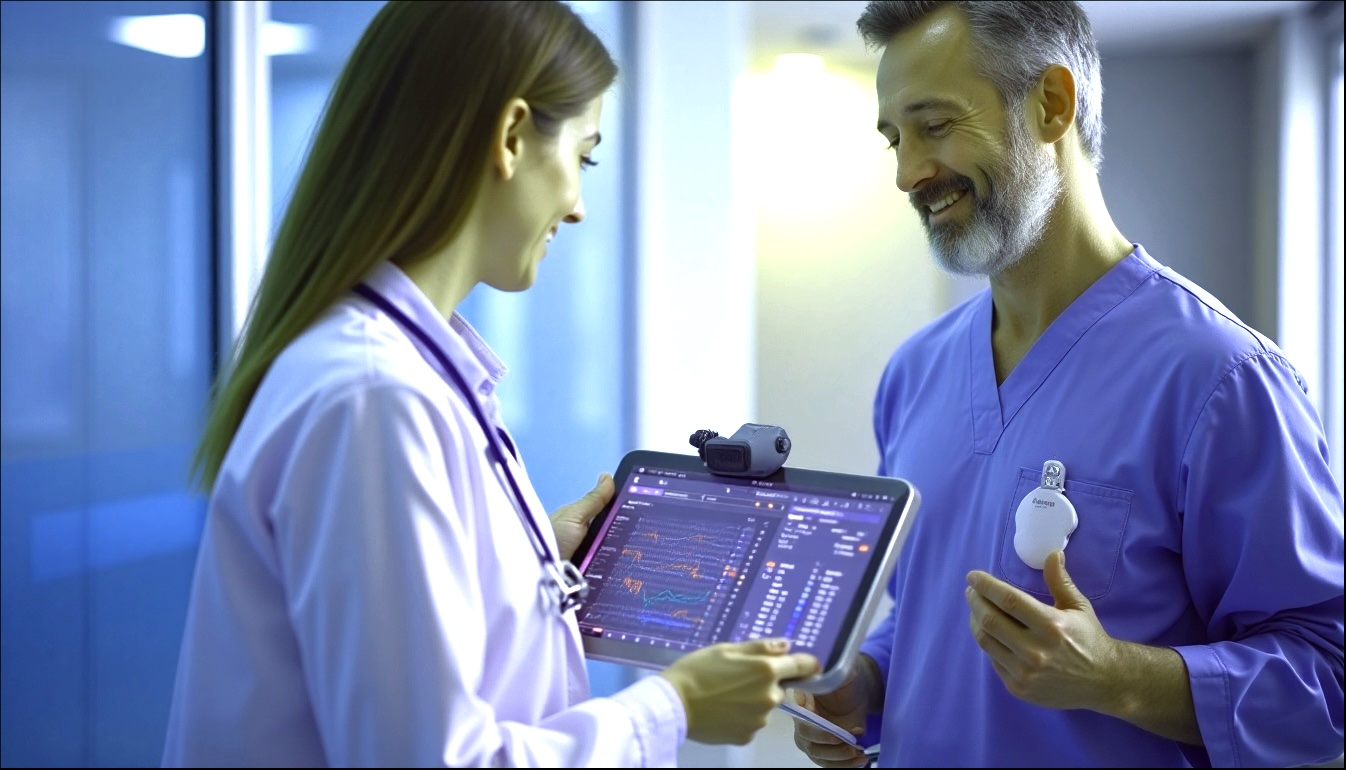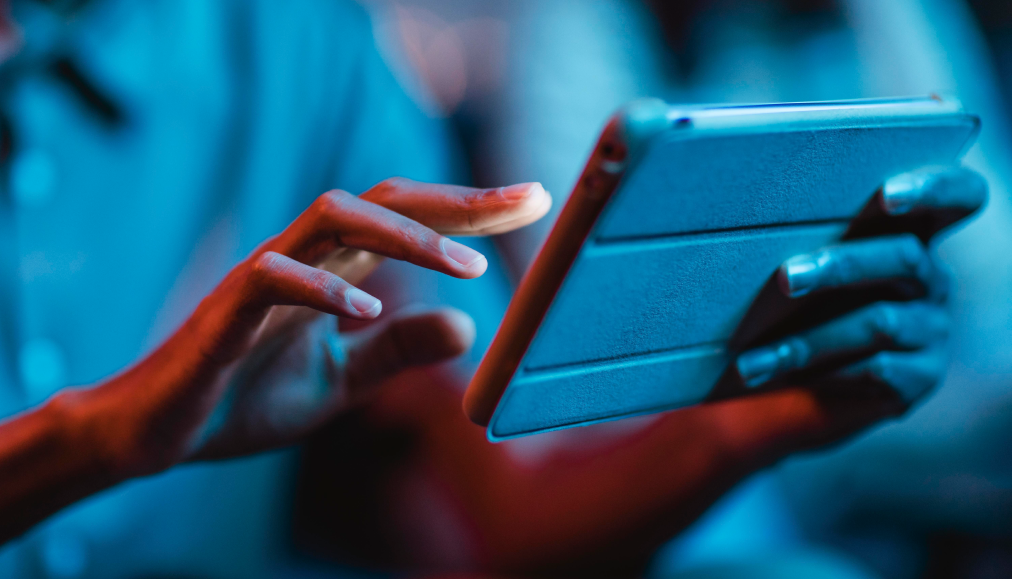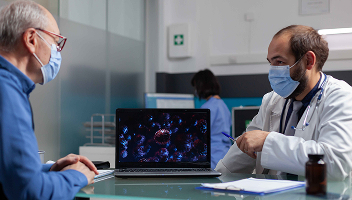The Connected Cure: How IoT is Revolutionizing Healthcare in 2025
In 2025, healthcare is undergoing a radical reinvention. Beyond the once-familiar scenes of waiting rooms and crowded hallways, patient care has become a symphony of wireless sensors, AI-enhanced diagnostic tools, and real-time data streams. At the forefront of this transformation is the Internet of Things (IoT), which has emerged as the invisible backbone powering smart hospitals, revolutionizing remote monitoring, and ushering in a new era of personalized care.
Today, we explore how IoT in healthcare is trending, what statistics reveal about its growth, and how this convergence of technology is set to reshape medicine as we know it.
The Market Pulse: Explosive Growth and Billion-Dollar Projections
The market for IoT in healthcare is not just expanding—it’s booming. Recent projections by The Business Research Company indicate that the global IoT in healthcare market grew from approximately $231.71 billion in 2024 to an estimated $282.23 billion in 2025, reflecting a robust 21.8% compound annual growth rate (CAGR) The Business Research Company. Furthermore, market analysts expect this trend to continue, projecting valuations that could breach the $600 billion mark by 2029. This rapid growth is driven by widespread digital transformation, an increasing demand for remote patient care, and a global push for more efficient, cost-effective healthcare solutions.
As healthcare systems around the world grapple with rising costs and an aging population, investment in IoT devices—from wearable monitors to smart implants—has become a strategic imperative. This financial buoyancy is fueling research and innovation, ensuring that medical professionals have access to predictive analytics and real-time monitoring tools that can enhance patient outcomes on a global scale.
Related Article: Impact of IoT in Healthcare
Smart Hospitals: The Integration of Infrastructure and Innovation
Hospitals in 2025 are no longer mere repositories of medical equipment—they are vibrant ecosystems where technology and infrastructure converge. Smart hospitals now integrate IoT devices with centralized data hubs to create an interconnected network that enhances everything from patient tracking to asset management. One remarkable case is the innovative project at Nottingham University Hospitals, where voice-activated control systems and automated patient check-ins have streamlined daily operations, reducing wait times and enhancing patient satisfaction.
According to an industry report by GlobeNewswire, the smart hospital market witnessed a leap from $57.53 billion in 2023 to $67.63 billion in 2024 and is anticipated to escalate at an 18.35% CAGR to reach $187.20 billion by 2030, GlobeNewswire. These “smart” institutions leverage IoT-enabled systems to optimize resource allocation, monitor critical workflows, and even use AI to predict patient admission spikes—further cementing IoT as the operational linchpin of modern healthcare.
Wearables and Implants: The New Guardians of Health
One of the most visible manifestations of IoT in healthcare today is the explosion of wearable devices and advanced implants. These smart devices are no longer just fitness trackers; they have evolved into sophisticated medical instruments capable of measuring vital signs, predicting health anomalies, and even administering life-saving interventions. According to Fortune Business Insights, the global wearable medical devices market is poised to grow from $103.04 billion in 2025 to $324.73 billion by 2032, registering a CAGR of 17.8% Fortune Business Insights.
As one expert in digital health succinctly put it, “Wearables and smart implants are not just a trend; they represent the decentralization of healthcare, bringing critical insights directly to patients and transforming every interaction into an opportunity for proactive care,” FT.com.
Remote Monitoring: Reducing Boundaries and Bridging Gaps
Remote patient monitoring (RPM) is perhaps the most striking demonstration of IoT’s disruptive influence in healthcare. With the increasing availability of high-speed networks and interoperable devices, healthcare providers are now empowered to monitor patients in real time, regardless of their location. This trend has been particularly transformative during public health emergencies and in rural or underserved regions.
According to MarketsandMarkets, the RPM market was valued at $24.39 billion in 2023 and is forecasted to more than double to $56.94 billion by 2029, as adoption soars at a CAGR of 12.7% MarketsandMarkets. It is estimated that by the end of this year, over 70 million Americans will rely on some form of remote monitoring—a trend that underlines not just the resilience of the healthcare system but also its increasing reliance on digital solutions for continuity of care.
RPM devices, often using Bluetooth technology, continuously track critical parameters such as heart rate, oxygen levels, and glucose levels. With real-time data feeding directly into healthcare provider dashboards, anomalies are identified and addressed almost immediately, sometimes even before the patient is aware of the issue. As one clinician noted, “Remote monitoring has become our silent guardian, catching subtle cues in patient data that can signal the need for intervention well before traditional symptoms emerge,” Reuters.
IoT Meets AI: The Data-Driven Healthcare Paradigm
At the confluence of IoT and artificial intelligence lies the true potential of digital healthcare. IoT devices continuously collect vast amounts of data, ranging from patient vitals to hospital operational metrics, creating a fertile ground for AI algorithms to analyze and predict health outcomes. This data-driven approach has given rise to predictive analytics models capable of foreseeing disease progression, optimizing treatment protocols, and improving overall patient management.
For instance, AI-powered platforms are now able to integrate data from disparate sources—including EHRs, wearables, and imaging systems—to provide a holistic view of patient health. These insights allow for more individualized treatment plans, tailored not only to the disease but to the patient’s unique physiological profile. As digital health expert Dr. Emily Larson puts it, “The integration of IoT with AI is not just enhancing diagnostics but is fundamentally shifting the paradigm from reactive care to proactive, preventative healthcare” Statista.
Furthermore, healthcare providers are now leveraging machine learning to sift through terabytes of data to identify trends that can inform public health policies and clinical decisions. This fusion is transforming hospitals into smart ecosystems where every patient interaction contributes to a continuous cycle of improvement and innovation.
Securing the Future: Cybersecurity in the IoT Era
While IoT brings with it unprecedented advantages, it also opens new vulnerabilities. As hospitals and clinics increasingly rely on interconnected devices, the threat landscape expands dramatically—making cybersecurity a top priority. Recent incidents have underscored the risk: cybersecurity vulnerabilities in connected patient monitors, for instance, have prompted the U.S. FDA to issue warnings regarding specific devices Reuters.
To combat this, healthcare institutions are investing heavily in advanced security protocols and multi-layered defense systems. From encryption standards to continuous threat monitoring, cybersecurity frameworks are evolving in tandem with IoT technology to safeguard sensitive patient data. Institutions like the Princess Alexandra Hospital NHS Trust have led the charge by establishing dedicated cybersecurity units focused on protecting digital infrastructures. As one security analyst noted, “In an age where data is as valuable as life itself, proactive cybersecurity measures are not optional—they are critical,” FT.com.
The Road Ahead: Personalized, Predictive, and Proactive Healthcare
The rapid integration of IoT across healthcare delivery is laying the groundwork for an exciting future where medicine is not only more accessible but also more precise. As IoT devices continue to proliferate, healthcare will increasingly pivot towards a model that is both personalized and predictive. Imagine a future where your wearable not only monitors your heart rate but also provides tailored recommendations based on real-time analytics, or where smart implants predict complications before you even experience symptoms.
Moreover, the shift towards remote monitoring and virtual consultations is dissolving geographical barriers to healthcare access, ensuring that even patients in remote rural regions can receive expert care. With digital ecosystems seamlessly connecting patients with providers, the traditional divide between urban and rural healthcare is gradually disappearing. In the words of one thought leader in digital health, “IoT is democratizing healthcare by making quality care accessible, regardless of location. It’s a leap towards a world where every patient is just as connected as their physician,” GlobeNewswire.
Challenges on the Digital Frontier
Despite these advances, integrating IoT into healthcare is not without its challenges. Interoperability between devices, data privacy concerns, and the need for robust regulatory frameworks remain pressing issues. Healthcare providers must navigate the complexities of legacy systems while ensuring that new technologies adhere to stringent standards of data security and patient confidentiality.
Regulatory bodies worldwide are collaborating with industry stakeholders to develop standards that ensure smooth data exchange and protect patient rights. This evolving regulatory landscape is critical to fostering trust and promoting wide-scale adoption of IoT technologies within healthcare ecosystems. As healthcare systems brace for these challenges, continuous innovation and collaborative policymaking will be essential to unlocking IoT’s full potential.
A Connected Future in Healthcare
As we move further into 2025, the convergence of IoT with artificial intelligence, remote patient monitoring, and smart infrastructure is redefining what’s possible in healthcare. With market growth projections soaring and transformative innovations pushing the boundaries of patient care, IoT stands as a testament to the power of technology to revolutionize an industry that touches every human life.
The journey from reactive to proactive, personalized care is well underway. From smart hospitals that optimize every process to wearables that act as vigilant guardians of our health, the digital revolution in healthcare promises not only increased efficiency and lower costs but, more importantly, a future where every patient receives care tailored to their unique needs. This isn’t just an evolution in technology; it’s a revolution in our understanding of health, wellness, and what it means to be connected in the modern world.
FAQs
1. What is IoT in healthcare, and how does it work?
IoT in healthcare refers to a network of connected medical devices and systems that collect and transmit real-time health data. These devices—wearables to smart implants—enable continuous monitoring, remote diagnostics, and proactive treatment, creating a more efficient and patient-centric healthcare ecosystem.
2. How is IoT transforming hospitals in 2025?
Smart hospitals in 2025 are leveraging IoT healthcare technology to automate workflows, track patients and assets, and enhance diagnostics. From voice-activated systems to predictive AI tools, IoT is reshaping hospital infrastructure into intelligent, responsive environments.
3. What are the benefits of IoT in remote patient monitoring?
Remote patient monitoring (RPM) powered by IoT allows doctors to track vital signs like heart rate, glucose levels, and oxygen saturation in real time. This leads to faster interventions, reduced hospital visits, and improved care for patients in remote or underserved areas.
4. What is the market size of IoT in healthcare in 2025?
According to industry reports, the IoT in healthcare market is projected to reach $282.23 billion in 2025, growing at a CAGR of 21.8%. This explosive growth reflects the increasing demand for digital health solutions and real-time patient care.
5. How are wearable medical devices evolving in healthcare?
Modern wearable medical devices go far beyond fitness tracking—they now detect anomalies, monitor chronic conditions, and even deliver life-saving alerts. This growth is accelerating, with the wearables market expected to surpass $324 billion by 2032.
6. What role does AI play in IoT healthcare systems?
AI in healthcare IoT analyzes data collected from connected devices to detect patterns, predict health outcomes, and personalize treatment plans. This powerful synergy shifts the model from reactive to preventative and predictive care.
7. What are the biggest challenges of implementing IoT in healthcare?
Key challenges include interoperability issues, data privacy concerns, and cybersecurity risks. As more devices connect, healthcare systems must ensure secure data exchange and compliance with regulatory frameworks to protect patient information.
8. Is IoT making healthcare more accessible and affordable?
Yes, IoT in digital health is reducing the cost of care by enabling early detection, minimizing hospital admissions, and supporting telemedicine and virtual consultations. It’s also bridging the healthcare gap in rural and remote communities.









